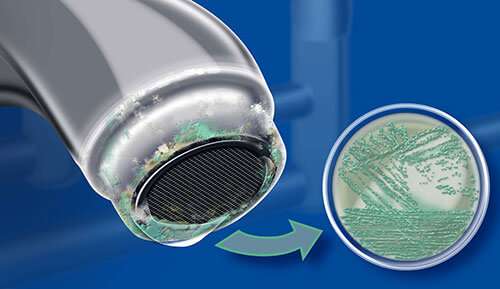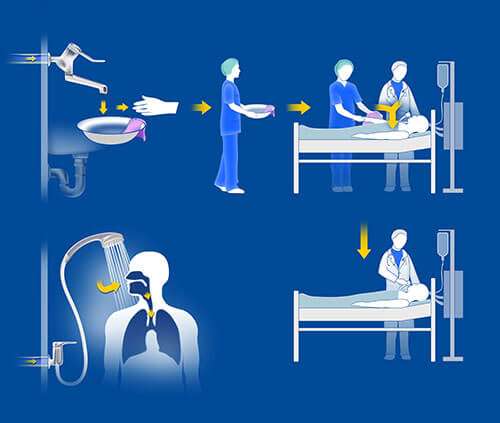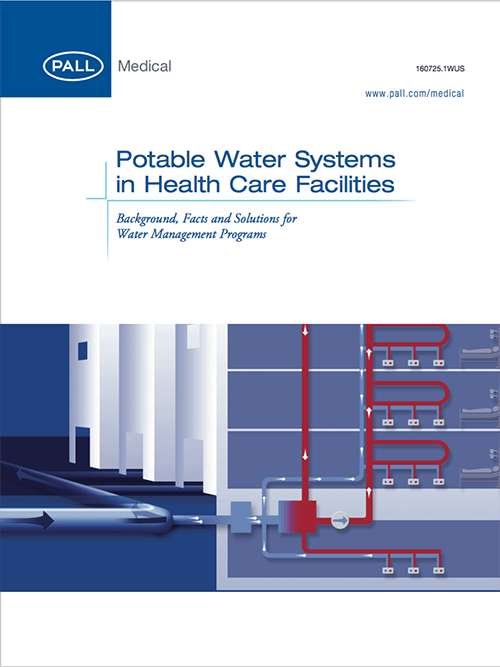Why is Pseudomonas aeruginosa of particular concern?
Image 7: Pseudomonas aeruginosa is an aerobic bacterial species and commonly found at the periphery of water systems such as taps, showers or sinks.
What are the possible infection pathways from water points-of-use to patients?
Inhalation and aspiration represent the established transmission pathways for Legionella spp. (49), whereas Pseudomonas spp. is reported to be mainly transmitted by contact and aspiration (17, 41). During daily routines, tap water is used for personal hygiene. For example, in the healthcare environment, due to the severity of their disease states, ICU patients often have multiple access devices such as catheters, drains and tracheal tubes. These portals represent potential entrance sites for bacteria from numerous sources. Droplets of contaminated tap water or contaminated hands of healthcare professionals can inadvertently come into contact with those entrance sites (50). Rogues et al. reported that 14 % of ICU healthcare professionals hands were Pseudomonas positive when washed with contaminated tap water and 12 % were positive when the last contact was with a Pseudomonas positive patient (41). Contaminated bottled water or contaminated water from drinking water dispensers has also been described as a source of Pseudomonas bacteria (51-53).
Image 8: Water for wound care, or patient’s personal hygiene, may contain bacteria resulting in patient colonization and infection. A patient may not necessarily have to use a water outlet to become colonized; immobilized patients, e.g. within ICUs, can come in contact with contaminated water brought by health care workers to the patient’s bed.







